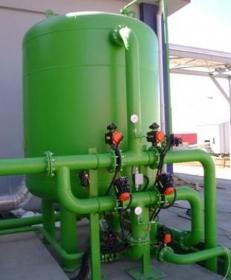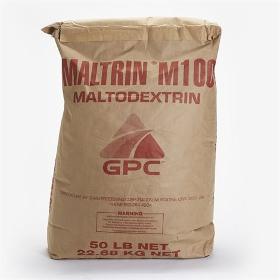- europages
- >
- COMPANIES - SUPPLIERS - SERVICE PROVIDERS
- >
- ion exchangers
Results for
Ion exchangers - Import export

ENKI WATER TREATMENT TECH. LTD
Turkey
Both cation and anion resin can be feed in to an ion exchanger tank and mixed to create a mixedbed ion exchanger. A mixedbed ion exchanger is more complicated than other types of ion exchangers because it has to separate and regenerate the two resins. The carefull mixing of the cation and anion resin allows a very high degree of deionization. Mixed bed ion exchangers produce the highest quality demineralized water of any of the ion exchanger units. Working mixedbed ion exchangers deionize water with up to 50 ppm TDS (Total Dissolved Solids). Polishing mixedbed ion exchangers are located after cation and anion exchangers or reverse osmosis units Strong acid cation and strong base anion resins are used in mixedbed ion exchangers, as complete demineralization is the objective. A small volume of inert resin can also be used to facilitate separation of the cation and anion resin beads during regeneration

ENKI WATER TREATMENT TECH. LTD
Turkey
Media filter is used to reduce the level of suspended solids (turbidity) in feed water. Suspended solids consist of small particles such as silt, clay, grit, organic matter, algae and other microorganisms. Feed water that is high in suspended solids can cause a high pressure drop and reduce the effectiveness of downstream equipment such as reverse osmosis membranes and ion exchange beds.

ENKI WATER TREATMENT TECH. LTD
Turkey
Reverse osmosis is the finest level of filtration available. The reverse osmosis membrane acts as a barrier to all dissolved salts and inorganic molecules, as well as organic molecules with a molecular weight greater than approximately 100. Water molecules, on the other hand, pass freely through the membrane creating a purified product stream. Rejection of dissolved salts is typically 95% to greater than 99%. Classification of brackish water: • Low salinity brackish waters: up to 5.000 ppm • High salinity brackish waters: between 5.000 - 15.000 ppm • Sea water: up to 45.000 ppm Reverse osmosis is a technology that is used in the production of ultrapure water for use in the semiconductor industry, power industry (boiler feed water), and medical/laboratory applications. Utilizing reverse osmosis prior to ion exchanger dramatically reduces operating costs and regeneration frequency of the Ionen exchanger plant.

ADANA CHEM SAN A.S
Turkey
Maltodextrin obtained by partial hydrolysis of starch; They are water-soluble, tasteless products and are defined by the FDA as products with DE values of less than 20. C6H12O6, which is also on the GRAS list; It is an excellent mass builder for standard and low-fat products. Maltodextrin is an intermediate between starch and glucose obtained during controlled starch hydrolysis involving enzymes such as bacterial alpha amylase, and is subjected to additional conversion processes to have the desired DE of 4-30. Following these processes, the product; It is refined by processes such as clarification, carbon treatment and ion exchange, and spray-dried to 3-5% humidity. C6H12O6, a white, low sweetness powder, does not hold water on its own, but its solution shows a very high viscosity. Due to its indefinite neutral taste, it does not affect other food flavors, easily disperses in cold and aqueous based systems, and exhibits a structure that can preserve its clarity and appearance
Request for a quote
NEZIROGULLARI ORGANIK GUBRE
Turkey
BENEFITS OF HUMIC & FULVIC ACID ** Increases nutrient intake. ** Increases frost resistance. ** It prevents soil erosion. ** By solving the hardening in the soil, it enables the plant to root more easily, encourages root growth and provides aeration of the soil. ** It regulates and facilitates the movement of water and air in the soil. ** It removes the excess sodium (Na) in the soil and removes the aridity. It regulates the pH by dissolving lime in the soil. ** By increasing the ion exchange in the soil, it frees the phosphorus, calcium and trace elements of clay minerals and enables them to be used by plants. ** It makes the existing nutrients in the soil chelated and facilitates their absorption by plants. ** Increases microorganism activities in the soil. ** Increases the flower setting rate of the plant. ** Extends the shelf life of the product. ** Increases the sugar content of fruits and vegetables. ** It enables the seed to germinate in a short time.
Request for a quoteDo you sell or make similar products?
Sign up to europages and have your products listed

NEZIROGULLARI ORGANIK GUBRE
Turkey
We are a manufacturer company in Turkey. We are a Ministry licensed direct manufacturer. BENEFITS OF HUMIC & FULVIC ACID ** Increases nutrient intake. ** Increases frost resistance. ** It prevents soil erosion. ** By solving the hardening in the soil, it enables the plant to root more easily, encourages root growth and provides aeration of the soil. ** It regulates and facilitates the movement of water and air in the soil. ** It removes the excess sodium (Na) in the soil and removes the aridity. It regulates the pH by dissolving lime in the soil. ** By increasing the ion exchange in the soil, it frees the phosphorus, calcium and trace elements of clay minerals and enables them to be used by plants. ** It makes the existing nutrients in the soil chelated and facilitates their absorption by plants. ** Increases microorganism activities in the soil. ** Increases the flower setting rate of the plant. ** Extends the shelf life of the product.
Request for a quote
NEZIROGULLARI ORGANIK GUBRE
Turkey
BENEFITS OF HUMIC & FULVIC ACID ** Increases nutrient intake. ** Increases frost resistance. ** It prevents soil erosion. ** By solving the hardening in the soil, it enables the plant to root more easily, encourages root growth and provides aeration of the soil. ** It regulates and facilitates the movement of water and air in the soil. ** It removes the excess sodium (Na) in the soil and removes the aridity. It regulates the pH by dissolving lime in the soil. ** By increasing the ion exchange in the soil, it frees the phosphorus, calcium and trace elements of clay minerals and enables them to be used by plants. ** It makes the existing nutrients in the soil chelated and facilitates their absorption by plants. ** Increases microorganism activities in the soil. ** Increases the flower setting rate of the plant. ** Extends the shelf life of the product. ** Increases the sugar content of fruits and vegetables. ** It enables the seed to germinate in a short time.
Request for a quote
NEZIROGULLARI ORGANIK GUBRE
Turkey
BENEFITS OF HUMIC & FULVIC ACID ** Increases nutrient intake. ** Increases frost resistance. ** It prevents soil erosion. ** By solving the hardening in the soil, it enables the plant to root more easily, encourages root growth and provides aeration of the soil. ** It regulates and facilitates the movement of water and air in the soil. ** It removes the excess sodium (Na) in the soil and removes the aridity. It regulates the pH by dissolving lime in the soil. ** By increasing the ion exchange in the soil, it frees the phosphorus, calcium and trace elements of clay minerals and enables them to be used by plants. ** It makes the existing nutrients in the soil chelated and facilitates their absorption by plants. ** Increases microorganism activities in the soil. ** Increases the flower setting rate of the plant. ** Extends the shelf life of the product. ** Increases the sugar content of fruits and vegetables. ** It enables the seed to germinate in a short time.
Request for a quoteResults for
Ion exchangers - Import exportNumber of results
9 ProductsCountries
Company type